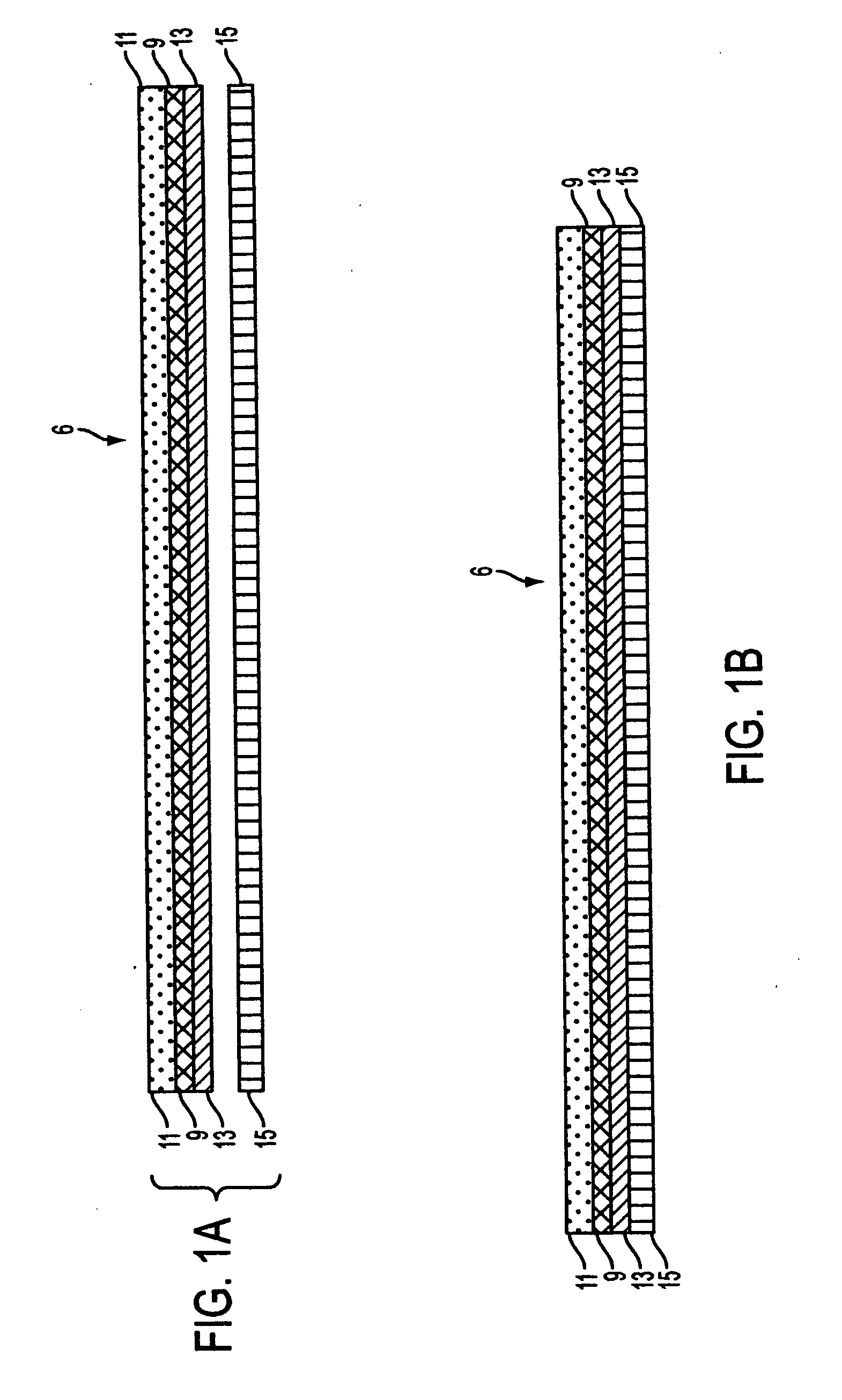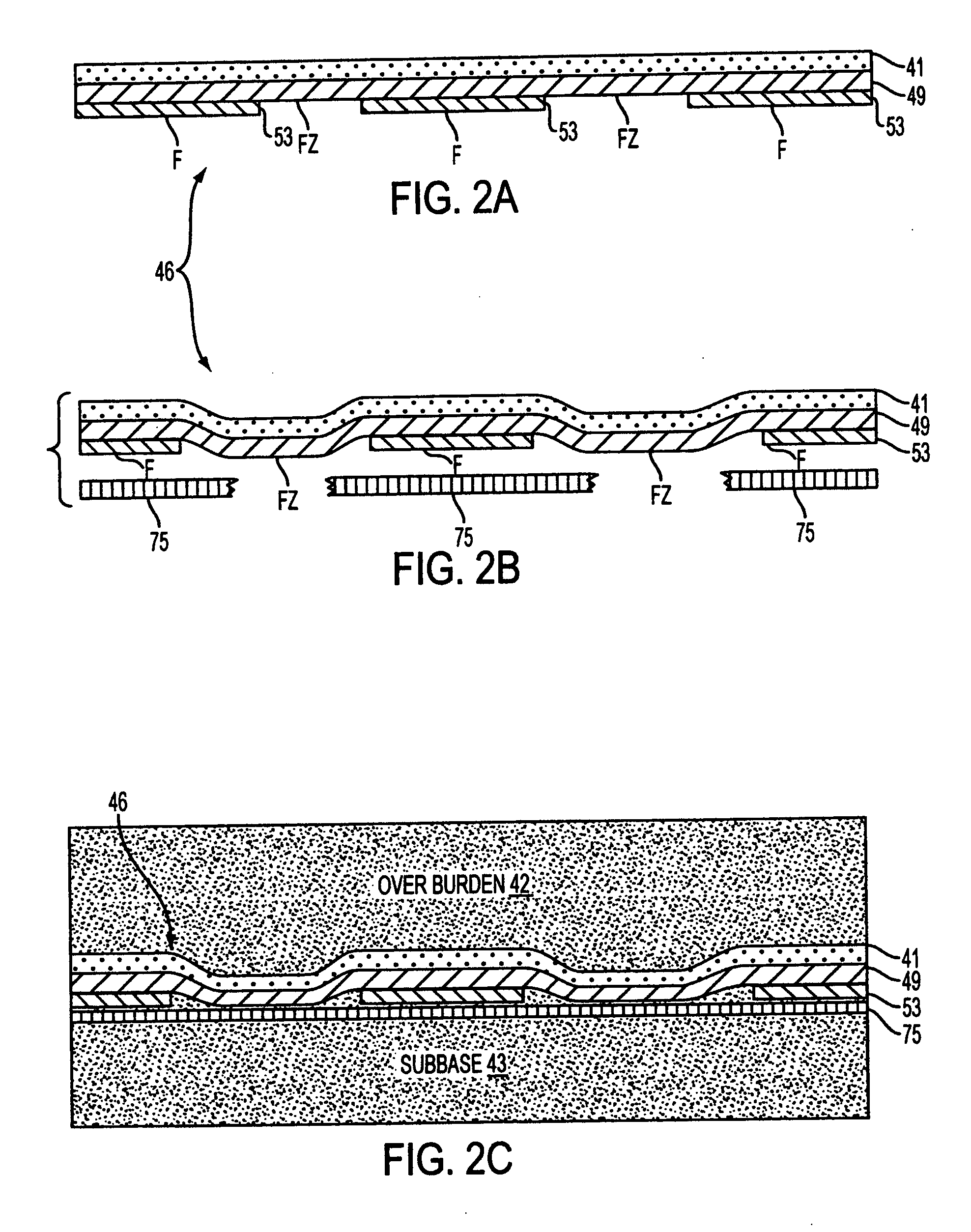Multiple zone, high-capacity geo-composite drainage structures and methods suitable for high friction angle applications
a geo-composite and drainage structure technology, applied in the field of geo-composite drainage structures and high-capacity geo-composite drainage structures, can solve the problems of limited use, high cost, and difficulty in maintaining or increasing desirable flow characteristics, and achieves the effect of reducing unit costs, maintaining or increasing desirable flow characteristics, and high frictional properties
- Summary
- Abstract
- Description
- Claims
- Application Information
AI Technical Summary
Benefits of technology
Problems solved by technology
Method used
Image
Examples
Embodiment Construction
[0048] The invention may be understood both with respect to the textual description provided herein and also with respect to the accompanying figures, which are exemplary only and show only a few of the many permutations of embodiments of the present geo-stabilizers.
[0049] Within the meaning of the invention, a geonet core can be of any material so long as it provides the needed design strengths and performance characteristics. Depending upon the specific embodiment, a geocomposite of the invention can be installed with or without a geomembrane beneath it. Moreover, the numerous embodiments of the present invention can be adapted to specific uses since resistance to movement is provided in several different aspects.
[0050] The present invention includes methods for designing and using its myriad embodiments. Thus, any combination of flow zones, friction zones and anchor zones can be combined to form a drainage structure of desired drainage capacity and resistance to movement on a g...
PUM
 Login to View More
Login to View More Abstract
Description
Claims
Application Information
 Login to View More
Login to View More - R&D
- Intellectual Property
- Life Sciences
- Materials
- Tech Scout
- Unparalleled Data Quality
- Higher Quality Content
- 60% Fewer Hallucinations
Browse by: Latest US Patents, China's latest patents, Technical Efficacy Thesaurus, Application Domain, Technology Topic, Popular Technical Reports.
© 2025 PatSnap. All rights reserved.Legal|Privacy policy|Modern Slavery Act Transparency Statement|Sitemap|About US| Contact US: help@patsnap.com



